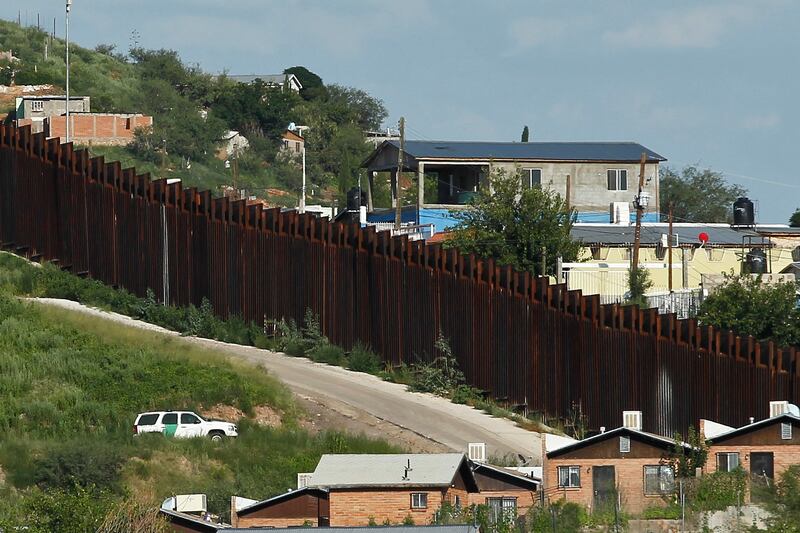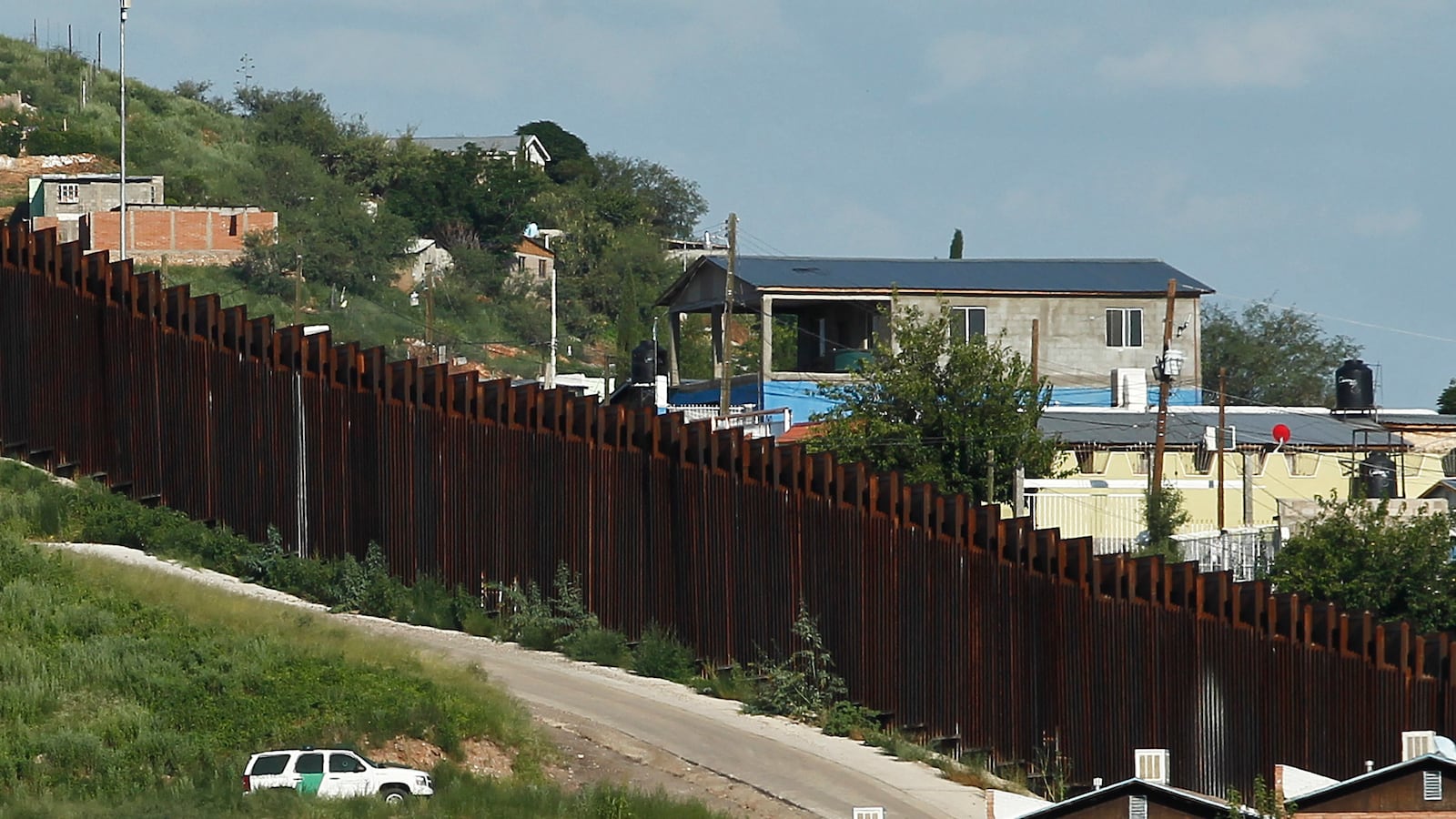Turf battles, internal dysfunction and other troubles have left U.S. Customs and Border Protection grasping to get a handle on corruption and other misconduct within its ranks, according to an internal study that has been kept secret for more than a year.

The agency, the nation’s largest federal law enforcement force with nearly 60,000 employees, has struggled to streamline its own disciplinary system, to stamp out an internal “code of silence” that protects corrupt coworkers from exposure or even to fully understand how bad the corruption problem is.
These woes and more are highlighted in a study conducted by the Homeland Security Studies and Analysis Institute, which acts as a think tank for the Department of Homeland Security. The 80-page unclassified report, reviewed by the Center for Investigative Reporting, highlights nagging problems, some of which date back to 2002.
As the department has bolstered border security by adding thousands of new agents, expanding its Southwest border fence and deploying sophisticated surveillance technology, Mexican crime syndicates increasingly have turned to bribing agency employees and have attempted to infiltrate U.S. law enforcement ranks with their own operatives to avoid those obstacles.
Customs and Border Protection has identified at least 15 attempts of infiltration, according to the study, which did not give specific examples. That number could be much higher now as the agency, as mandated by a 2010 law, has ramped up efforts to administer polygraph exams to all new applicants.
As part of lie-detector tests, prospective hires have admitted to drug trafficking, human smuggling and other illegal activity, according to examples the agency previously provided to the Center for Investigative Reporting.
One applicant told examiners that he smuggled 230 people across the border and shuttled drug dealers around border towns so they could conduct their business. Another admitted to various crimes, including transporting $700,000 in drug money and 50 kilograms of cocaine across the Southwest border.
Since Oct. 1, 2004, 147 agency officers and agents have been charged with or convicted of corruption-related offenses, ranging from taking bribes to allowing drugs into the country to stealing government money. About a dozen of those cases came to light in 2012.
“This is a small minority of the workforce, but it represents a threat to our national security,” the authors wrote in the study.
The most recent incident involves a border patrol agent in Yuma, Ariz., who was arrested Dec. 2 when federal agents caught the staffer of two years as he loaded nearly 150 pounds of marijuana into his patrol vehicle while on duty.
The border agency has made strides to address the “persistent problem” of corruption, the report contends. In particular, the agency has used data to research and analyze potential threats and security weaknesses.
One example, dubbed Operation Side Door, examines leads and other data from applicants who have admitted to involvement with smuggling to detect possible links to current agency employees. Another, called Operation Southern Exposure, evaluates seizure data to spot potential employee misconduct.
Despite those innovations, the agency still lacks a comprehensive and coordinated approach to ferret out corruption, the study found.
The Government Accountability Office recently released its own report after a yearlong review of the border agency’s efforts to fight corruption, which came to a similar conclusion that the agency hasn’t implemented a comprehensive strategy, in addition to other concerns. But that report stopped short of looking at systemic issues that extend beyond Customs and Border Protection, which the internal study examined.
A prolonged turf battle with the department’s inspector general, which has been criticized for its own inefficiencies, has contributed to the border agency’s blind spots, the internal study found. The department’s inspector general has withheld information, neglected investigations and accumulated a backlog of investigations that at one point reached more than 1,000 corruption cases.
Charles K. Edwards, who is leading the Homeland Security inspector general’s office, testified in August during a House government reform hearing that turf battles among the agencies have subsided and his investigators could handle the nearly 1,600 cases of alleged employee misconduct open at the time.
The neglected cases and other inefficiencies have allowed employees suspected of corruption to remain in sensitive security positions or had their careers stunted before they were found not guilty, the study found.
Corruption-related cases generally have increased in recent years. Whether that is attributable to a hiring surge that in a decade has roughly doubled the size of the U.S. Border Patrol is inconclusive, the study says. According to the report, that’s because the inspector general has not shared enough information with the agency.
Susan Ginsburg, a former U.S. Treasury official and 9/11 Commission member, said it’s critical that agencies combine information and data so the Homeland Security Department and Congress have a clear picture of corruption at the border.
“It’s a pain in the neck for the department, but there are always going to be a few rotten apples in law enforcement,” Ginsburg said. “What hurts is when you’re not doing everything you can to prevent it and to weed them out.”
The inspector general’s office—which polices waste, fraud, and abuse among border agents, customs officers and the rest of the Homeland Security Department—is under investigation following allegations that agents at a Texas branch office were instructed to fabricate reports.
In what may be the first of several court cases, Wayne E. Ball, a former agent with the inspector general in McAllen, Texas, pleaded guilty Jan. 17 to a charge of conspiring to falsify records in a federal investigation, according to court documents filed in U.S. District Court in Brownsville, Texas.
The watchdog agency’s top investigator, three of his deputies and several agents have been put on administrative leave or reassigned pending the outcome of a Justice Department-led grand jury investigation into the allegations.
The inspector general since late spring also has unloaded hundreds of corruption and employee misconduct cases to the internal affairs offices for U.S. Immigration and Customs Enforcement and Customs and Border Protection to help whittle down its mounting backlog of investigations.
Part of the problem, the study concludes, is that while the inspector general’s office has the right of first refusal, it doesn’t have the agents to handle the thousands of complaints of wrongdoing. The inspector general has one agent for every 1,056 department employees. Customs and Border Protection, meanwhile, has one internal affairs agent for every 281 agency employees.
The study was commissioned in 2011 by then-Commissioner Alan Bersin and aimed to evaluate the agency’s countercorruption programs. Neither the agency nor the Homeland Security Department has made the report public since it was completed about a year ago. The Center for Investigative Reporting was allowed to view the report on the condition that its provenance be kept confidential.
In August, David Aguilar, deputy commissioner of Customs and Border Protection, told lawmakers during a hearing on border corruption that the agency has acted on some of the study’s findings, without revealing details of the report, and made other overtures to address corruption. But it remains unclear to what extent the recommendations have been adopted.
According to the internal study, at least two things are working to root out corruption at Customs and Border Protection: polygraph tests for applicants and FBI-led task forces.
The lie detector tests have eliminated about 75 percent of applicants from consideration, including those who don’t show up for the exam.
The study also highlights the FBI-led Border Corruption Task Forces, of which there are 13 along the Southwest border, as a model for law enforcement cooperation. In the past, the inspector general has tried to block Customs and Border Protection internal affairs agents from participating on the task forces, arguing that only the inspector general has that authority.
Customs and Border Protection in recent years hired more than 200 internal affairs agents to root out corruption. But those agents frequently have been sidelined from pursuing the most serious offenses to handle disciplinary cases.
Such cases, including misuse of government property or drug abuse, on average take months to resolve because of the agency’s overtaxed disciplinary system.
While some issues are structural, others are cultural, such as the “code of silence” problem. While not unique to the agency, the “ ‘code’ presents an insidious challenge to workforce integrity, and requires explicit, targeted, and sustained attention,” the report states.
Officials over the years have tried to grapple with some of these issues, warning against the structure in place today. In 2008, then-Homeland Security Secretary Michael Chertoff denied a request from W. Ralph Basham, the Customs and Border Protection commissioner from 2006 until 2009, that his internal affairs agents have the authority to investigate criminal matters involving employees.
Chertoff reasoned that corruption was tied to smuggling and trafficking, which are crimes probed by U.S. Immigration and Customs Enforcement, the department’s investigative arm.
Basham’s predecessor, Robert C. Bonner, in 2003 advised that without a fully functional internal affairs office, it would be impossible to rope in corruption.
“The fact that 134 (now 147) current or former (Customs and Border Protection) employees have been arrested or indicted on corruption-related charges since October 1, 2004 validates Commissioner Bonner’s concerns,” the report states.
This story, which was edited by Robert Salladay and copy edited by Nikki Frick and Christine Lee, was produced by the independent, nonprofit Center for Investigative Reporting, the country’s largest investigative reporting team.






